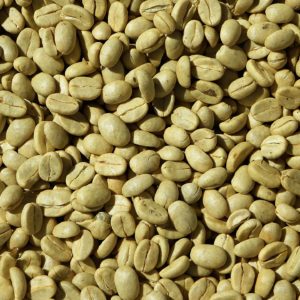It is a label similar to the nutritional labels that come in edible products. It will detail the water footprint (amount of water that was required to produce it), the carbon footprint (amount of equivalent CO2 emissions); as well as the toxic footprint (equivalent amount of agrochemicals used).
“The label is like a traffic light -it can be green, yellow, or red. For example, if the water footprint is good, it will have a green checked. Otherwise, it could be yellow or, in the worst case, red. The same will happen with the carbon footprint and the toxic footprint”, explained the coordinator of the sustainable production department of the Costa Rican Coffee Institute (Icafé), Víctor Vargas.
The good news is that on the Costa Rican coffee label, all 3 footprints have a green checked. It is important to take into account that, in Costa Rica, there are 78 coffee exporters and all of them will use the label.

How did this initiative come about?
In 2013, the Pilot Project of the European Union (EU): Environmental Product Footprint (EPF) requested that all products arriving on its continent have an environmental label, in order to raise awareness, and that the consumer had the possibility of choosing the friendliest.
Given this, for more than 8 years, the Coffee Institute of Costa Rica (Icafé), the Technological Institute of Costa Rica (TEC), the Climate Change Directorate of the Ministry of Environment and Energy (Minae); as well as the Institute of Technical Standards of Costa Rica (Inteco) have worked on the requirement.
“Even an environmental labeling network for “Café de América” was formed, where 14 coffee-producing countries participate today. Mainly, work began with funds from the Economic Commission for Latin America and the Caribbean (ECLAC). The good news is that Costa Rican coffee is the first in Latin America to achieve the environmental label”, added Vargas.
According to the Coordinator of the Department of Sustainable Production of Icafé, the advantage of being the first is that now the consumer “will be able to compare Costa Rican coffee in green; while other countries will be in yellow or will not have labeling, such as the case of Brazil, Vietnam, and India, who decided not to label it. Mainly because its footprint is very high”, he explained.
About the TEC’s role
In the case of TEC, the project was undertaken by environmental engineers, Ana Lorena Arias, and Luis Valerio. Both researchers were in charge of directing the coffee life cycle analysis and performing the category rules. “For this, coffee from all over Costa Rica was analyzed and category rules were established. Now if anyone wants to do a study, it has to be based on those same rules”, said Valerio.
Apart from coffee, there are currently 31 other products that are exported to Europe; for example, beer, wine, meat, fish, palm oil, banana, medical devices, computer components, among others. And all those products are also being asked to have an environmental label; the first is coffee. “In the case of those 31 products, the piloting for labeling is almost finished”, said the environmental engineer.
This environmental labeling announcement was made during the Ibero-American Life Cycle Congress, which was held in the TEC Campus of Costa Rica. This Congress aimed to inform the Ibero-American community about world advances in the life cycle.
Thus, for example, more than 50 projects were submitted; among them, an analysis of the use of disposable diapers and their impact on the environment. As a result, this specific study concluded that the best thing for the planet is to use cloth diapers.
“The Congress, in turn, sought to promote life cycle thinking and its applications to improve the sustainable conditions of development in business, academic, administrative, and consumer behavior”, said Ana Lorena Arias one of the researchers in the theme of the Costa Rica coffee life cycle and, also, one of the organizers of the event.
Satisfactorily, more than 200 people from Abkhazia, Germany, Argentina, Brazil, Chile, Colombia, Costa Rica, Cuba, Curacao, Ecuador, El Salvador, Spain, France, Guatemala, Italy, Mexico, Peru, Sweden, Switzerland, and Taiwan participated in the event.

